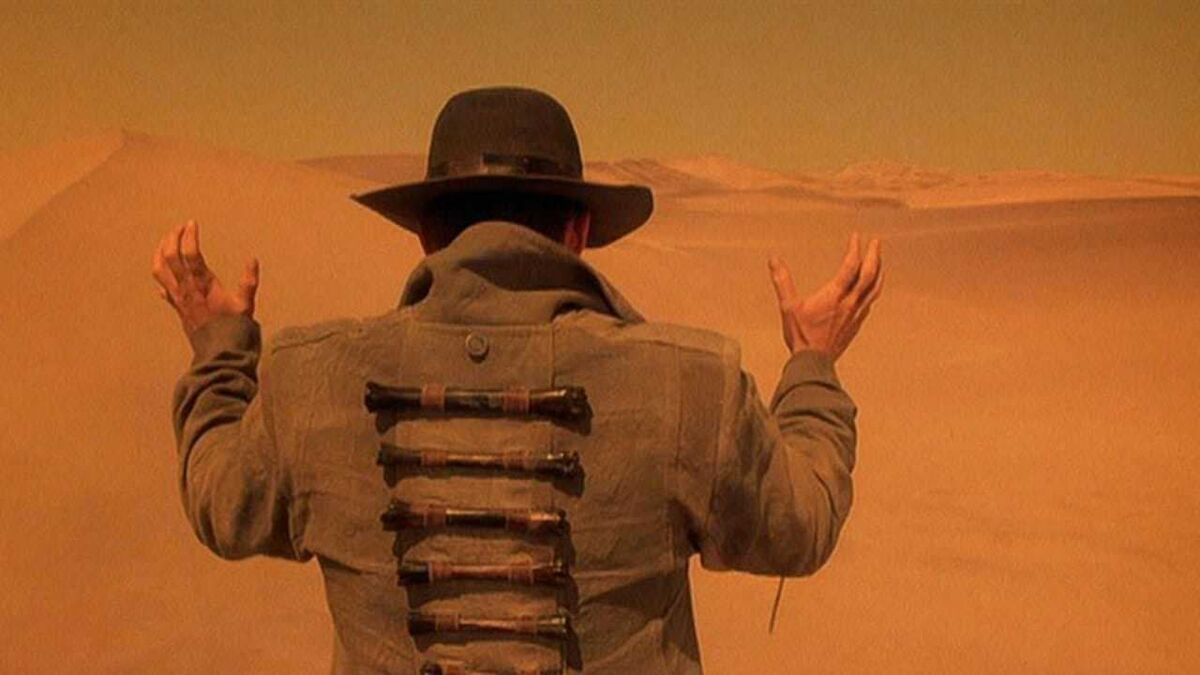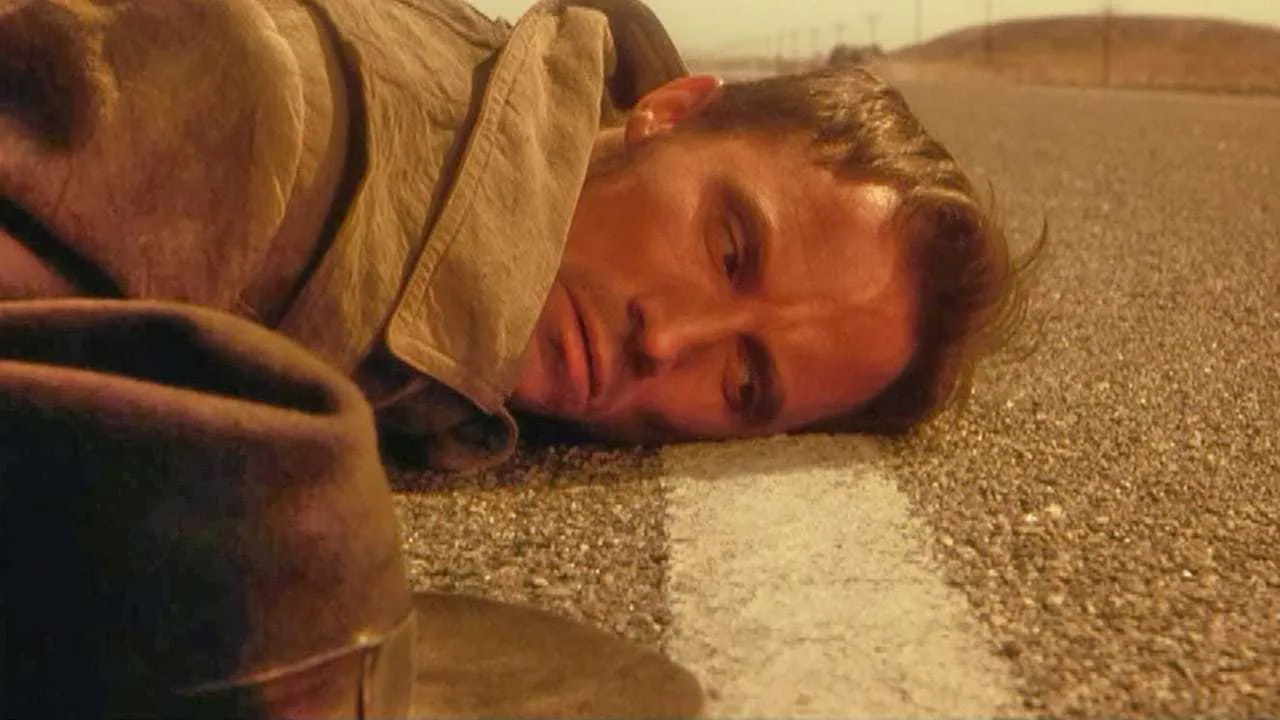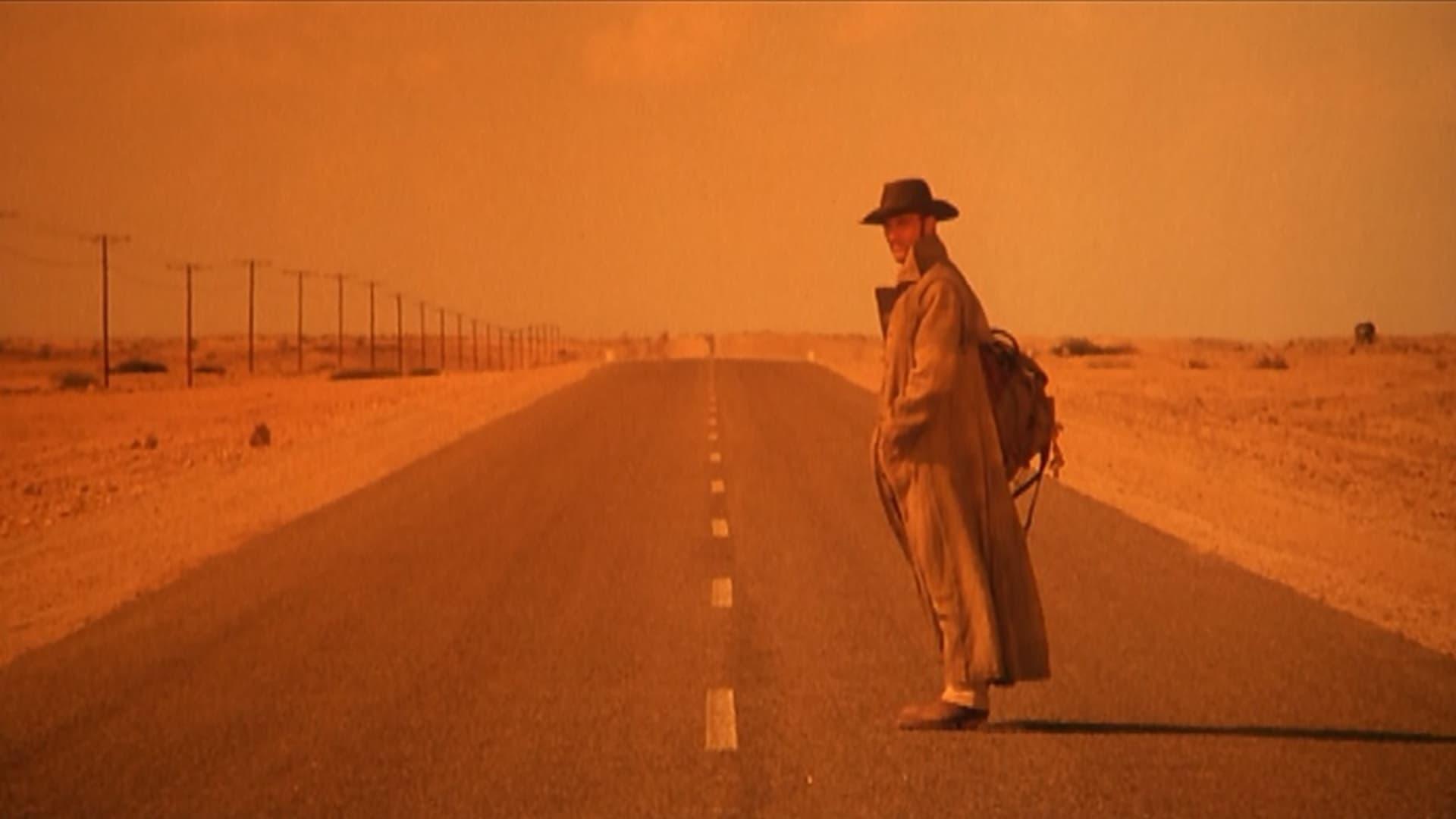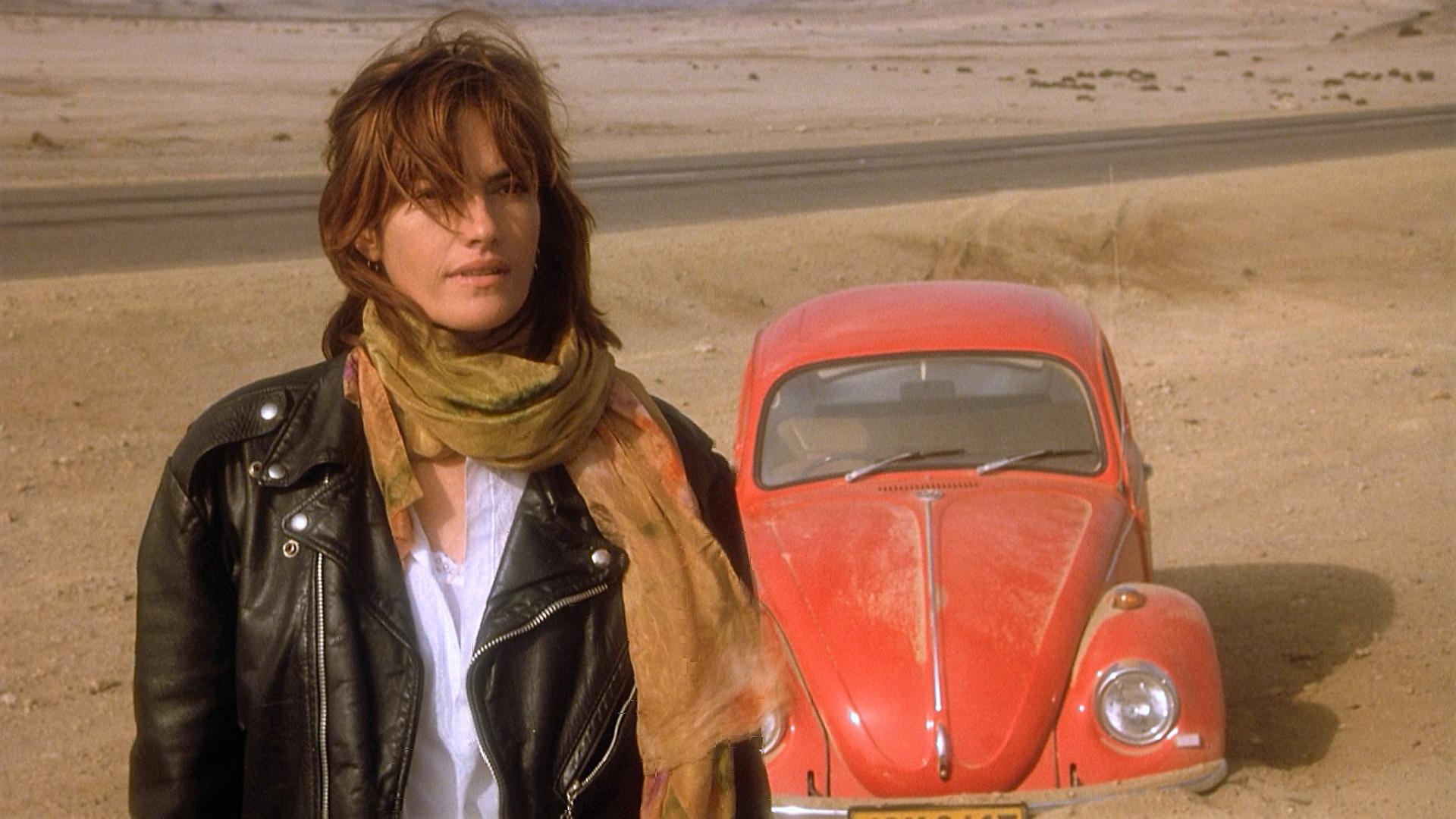In the 1990s, a number of high-profile movies with significant budgets gained popularity and entertained and thrill-seeking viewers for hours. The 1992 picture “Dust Devil” by Richard Stanley is the focus of today’s film study.
In Stanley’s feature film, which he also wrote, Robert Burke portrayed the enigmatic, wandering force of evil that prowled Namibia’s desolate desert sands in pursuit of his prey.
According to Stanley, the concepts and inspiration for the movie originated from a young child’s sketch of a fictitious character he called the disappearing Hitchhiker. It was therefore one of his personal endeavors that incorporated conventional storytelling techniques like “Color out of Space.”
Exploring the story in Details

A Sangoma or southern African tribe member named Joe Niemand is shown performing a chant in the movie’s opening sequences that describes the terrible demonic entity that prowls the Namibian deserts and hunts down his prey. The Dust devil only chases victims who are weak and wanting a voluntary death, in contrast to the psychotic killings depicted in other horror movies of the era. The supernaturalism and voodooism connected to the murders carried out by the demonic travelling force are accurately shown in the movie.
Even before the main plot of the film began, we could see the Dust Devil devil devour his first prey. Saartjie Haarhoff picks up a hitchhiker and later has a sexual relationship with him. The mood of the scene, however, changed in an instant when Saartjie was killed by the Dust devil and her house was burned down, leaving her body in her car. When it comes to the classic horror films of the 90s, the Dust Devil stands out from the crowd.
It is due to the touch of supernaturalism or black magic associated with the motives behind the kills. The Dust devil, unlike other psychopathic killer movies, only hunted the lonely and the lost. He was seen performing demonic rituals with their corpse to capture their spirits and improve his demonic abilities.
Later on in the movie, Wendy Robinson and her husband Mark get into a fight at home. Marks slaps Wendy during the heated exchange, and she later leaves him. Wendy then makes the long drive to Namibia’s deserts. Local police officials Sgt. Ben Mukurob and Captain Beyman take up Saartjie’s case in the interim. The police claim that Saartjie’s death was not an accident but rather a murder. They also gathered weird drawings from Saartjie’s home’s walls.
According to the drawings, the killings were carried out by a “naghtloper,” also known to Namibians as a shape-shifting creature that killed its prey to gain control over the materialistic world, which Mukurob subsequently confirms with his old tribal buddy Joe Niemand. Mukurob also discovers that to defeat a naghtloper, he must be enticed into stepping on a bewitched wooden club known as a kierie stick. As a result, Joe gives Mukurob a kierie stick and a sacred root to shield him from the demon’s evil borders so that the devil does not possess him when he is slain.
Wendy, on the other side, is seen traveling across Namibia’s scorching deserts when she encounters the hitchhiker or Dust Devil. Her unawareness of the hitchhiker’s intentions is one of the most essential elements contributing to the suspenseful tone of the film.
An interesting and thrilling moment in the film is when the hitchhiker takes the picture of his victims before killing them. Wendy’s vulnerability was prominently featured in the film as the key factor that draws the devil towards her. After meeting the enigmatic hitchhiker Wendy experiences a series of ghostly events, culminating in her driving past the same hiker who then vanishes from her speeding car.
Later that night, she stays at a roadside motel and tries to commit suicide. However, that night she realizes that she was being watched by an unseen entity. Ultimately, Wendy is unable to kill herself and decided to continue her drive to the middle of the sea instead.
She runs into the same hitchhiker once more the following morning as she returns to her car after checking out of the motel. Wendy was initially upset over the man’s sudden absence the day before, but the hoaxer’s sincere apology made Wendy feel a bit sorry for him.
Thus, she agrees to tag him along on her drive ahead. Meanwhile, in another scene, Captain Beyman hands Mukurob some important documents that contained information about a similar style of murder dating back to 1908. Mukurob’s convictions regarding the Dust devil, are strengthened by this evidence. He has decided to take down the demon by himself, with the help of the instructions provided to him by Joe. Therefore, begins his expedition to hunt down the naghtloper.
Later on in the film, we see that as Sgt. Mukurob prepares for his expedition, Dust devil also lures his next prey into his deathtrap. In the meanwhile, Wendy’s husband, Mark goes out into the desert to search for his wife across the Namibian deserts but Little does he know, that Wendy is romantically involved with none other than the devil himself. Both Wendy and the hiker were empathically connected, which erected an automatic sense of trust within Wendy for that man. As a result, she also starts feeling for the homeless hitchhiker.
However, her sense of trust was completely shattered and she was tremendously horrified when she witnesses the devil’s human finger trinkets. Upon realizing, Dust devil’s crooked intentions, Wendy tries to escape but the devil was quick enough in confronting her, resulting in a psychical assault between the petrified girl and the demonic evil entity.
Although it is obvious that the powers of the naghtloper are a hundred times more than Wendy’s, she managed to escape its clutches. However, she ends up running away from the evil spirit, into the dreary desert sands of Namibia. On one hand, Wendy recognizes the man as the creature, while the police on the other hand have begun searching for Wendy and the devil. The action and drama begin right here. Wendy runs, as the naghtloper transforms back into his native form and chases her.
An interesting character about the hitchhiker aka the Dust Devil was his habit of keeping a record of his prey, photographs with the exact time of their slaughter, and their cut fingers. Wendy had seen all these which made her realize that he is a killer. She flees only to be trailed by the man who had now turned himself into the beastly creature.
Here we come to the concluding part of the story where Wendy runs and the beast was unable to stop the car. Then he uses his supernatural powers to manipulate the brakes and wheel of the car crashing it against an oil tanker. As a result, oil was spilled everywhere. The beast, who had changed into a man by this point, blew up the entire structure, trapping Wendy inside her car as a result of the accident. But his plans were thwarted when Wendy managed to flee, obscuring the sight of the beast.
After the fire was nearly extinguished, the beast returned to the site only to find that his intentions is still not fulfilled. Wendy is alive and escaping into the deep desert. Thus once again the start of the cat and mouse chase. Sometimes the devil takes the form of a snake and haunts Wendy in sleep to make her walk. Through the scorching heat and desert, Wendy walks away from the devil, while he unintentionally guides her to the place where it all started, a deserted town engulfed in sand.
Here we meet Mukurob, who has also come in pursuit of the beast. Joe gave the inspector a unique dagger that had to be put into the beast’s body. If this is not done, the person who kills the beast will have possession of it. Similarly, the wicked soul is passed from one body to another, murdering all those who are lonely and miserable.
Wendy, the inspector, and the naghtloper confront each other in the penultimate climax. Inspector is stabbed by the beast before he can insert the knife into the corpse. Wendy shoots the beast, causing its skull to burst. However, she was unaware that the devil has some possessing powers which he finally uses on his killer, Wendy. Finally, we see that the immortal devil possesses Wendy as she walks out of the desert.
Marvelous Verdict

Dust Devil is a horror thriller of the 90s and a suspenseful drama that keeps audiences glued on the edge of their seat. The movie is surely an underrated gem and is worth watching. It is more like a Hollywood horror than a mystery film. The film’s outstanding acting and production make it worthwhile to watch. Director Richard Stanley had produced this gem, but it is not the best in his collection.
Stanley felt that his film was not initially a horror film. He admitted that this film was influenced by, El Topo, made by Alejandro Jodorowsky; Simon of the Desert by Luis Banuel; and Once upon a time in West by Sergeo Leone. He described this film as a collage between Italian Gialli and the spaghetti western films especially noting “The Good, the Bad and the Ugly”.
Previously Stanley made his film “Hardware” with a one-million-pound budget, which fetched seventy million US dollars. This film was budgeted for 2.8 million pounds. Although the film was not able to top the Box office marvelously, it seems to rejoice its horror enthusiast audience through the different elements of shapeshifting and supernatural activities.
Somewhere in the film, it seems very slow but that slowness builds up the suspense, in the end, all the main characters are clubbed in the final scene for the climax. We as audiences would have expected the demolition of the demon but here the director keeps the shapeshifter alive for the next sequel which would have been a possibility. Overall if you are a horror or supernatural enthusiast then this film will give you a chill.
Exploring the Dust Devil

Dust Devil is a devil, a shape shifter (Robert Burke) who comes from a desert in search of victims. His victims are those who are lonely and unloved or those who have already lost everything but life itself. In short, the devil preys on those who are unworthy of life. As a result, he would kill them to perform his demonic ritual and thereby increase his supernatural powers. This shapeshifter had a distinctive way of keeping track of his victims, which gave us the impression that he might be a psychotic serial killer in some ways.
He chronicles the moment of his victims’ deaths in photographs and collects their fingers in a box as a reminder of his rituals. Additionally, he traveled with these trinkets. Along with the dusty desert winds, the shapeshifter had the power to acquire any form and go wherever he pleased.
The devil in the movie had the power to change into various animals to stalk its prey. The Dust devil could be stopped, nevertheless, in one specific way. Only by fooling the shapeshifter into stepping on a kierie stick could the evil spirit be resisted. However, while encountering resistance in its rituals, could possess the body of the person killing it. Thus, the monster presented in the movie contributed to the heart-pounding thrill that gave the movie its cult following.
Conclusion

The movie Dust Devil, directed by Richard Stanley, isn’t one of his best, but it’s still exciting to watch. Even if the plot isn’t very exceptional, the director used conventional storytelling techniques to capture viewers with the intriguing plot. Robert Burke and Chelsea Fields brought the characters of the storyteller to life with their superb performances. As a result, this film is what you’re looking for if you like horror and supernaturalism.
